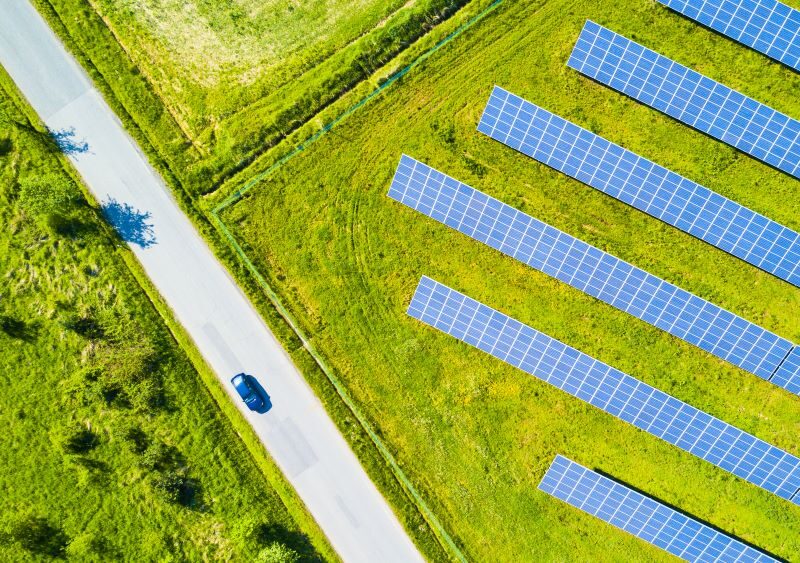Report: 70% of America’s Farmers Open to Solar Development
Over 70% of farmers are open to large-scale solar projects on their properties if system designs allow for continued agricultural production, according to a report released today by the Solar and Storage Industries Institute (SI2). The report, “Understanding Barriers to Agrivoltaics: A Survey Approach” is the first national survey to capture sentiment about solar on farmland from hundreds of farmers, solar developers, and utility stakeholders.
Agrivoltaics is the practice of combining agricultural production with solar energy generation and allows farmland to remain productive even after solar systems are installed. While there are nearly 600 agrivoltaic projects currently in operation in the U.S., according to the National Renewable Energy Laboratory, less than 10% of all large-scale projects use agrivoltaic techniques and there is considerable uncertainty about project development across stakeholder groups.

"The research shows most farmers are interested in exploring solar, provided that they have enough information to make good business decisions and continue farming," said David Gahl, SI2 Executive Director. "With the survey complete, we will develop case studies on the factors that influence project economics and outcomes in agrivoltaic projects, helping solar developers and farmers overcome the ongoing challenges they face."
The report is the first output of a larger research effort, funded by the U.S. Department of Energy Solar Energy Technologies Office under their FARMS program and in partnership with the Solar Energy Industries Association (SEIA), National Farmers Union, and the National Rural Electric Cooperative Association. The research program aims to understand the barriers to agrivoltaic development across stakeholder groups and identify potential solutions.
According to the report, nearly half of solar developers surveyed believe that solar on farmland will make up a majority of their future business opportunities. While 80% of developers plan to incorporate agrivoltaics techniques in their project designs going forward, certain techniques, such as elevating panels to allow for farm equipment access, are still seen as difficult to implement by large majorities of developers.
“This report shines a bright spotlight on the reality that farmers and ranchers can play a significant role in helping us keep the lights on with clean energy,” said Abigail Ross Hopper, president and CEO of the Solar Energy Industries Association (SEIA). “Agrivoltaics remain one of the smartest ways for farmers, big and small, to maintain their operations while speeding up clean energy deployment at the same time. This report confirms that, under the right circumstances farmers and solar developers want to work together, and our job now is to deliver the tools and resources they need to make that process easier.”
Farmers, solar developers and utility representatives all agreed that government incentives, legal and contract guidance and peer-reviewed research on the effects of agrivoltaic system design on agricultural systems were among the most impactful strategies to address concerns.
While solar developers report widespread concern around agrivoltaics development challenges such as increased cost, financing difficulty, and system performance, researchers found that developers with experience installing agrivoltaic projects are significantly less concerned by these obstacles.
The report also explores differences in sentiment toward agrivoltaics across gender identification, race/ethnicity and age. Non-white farmers were less likely to be familiar with agrivoltaics than white farmers, and also less likely than white farmers to be open to utility-scale solar on farmland. This finding suggests a need for a wide variety of trusted voices to help disseminate agrivoltaics information to communities, including farm associations, extension services, universities and solar developers, all of which were identified as preferred sources of information by at least a third of farmers.
The full report, complete survey responses and additional analysis can be found at ssii.org/farms-project.
Solar and Storage Industries Institute | www.ssii.org










.png?r=2461)

